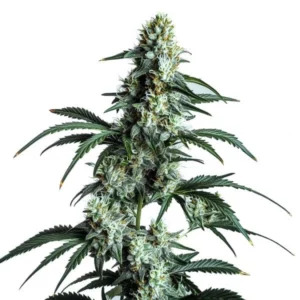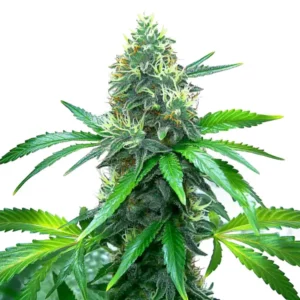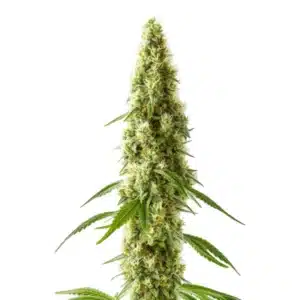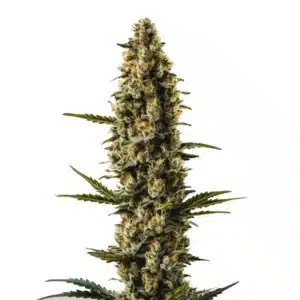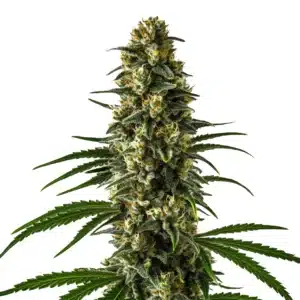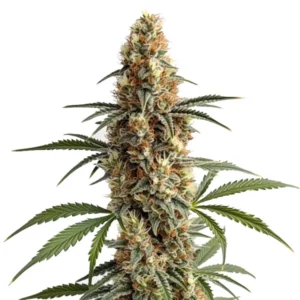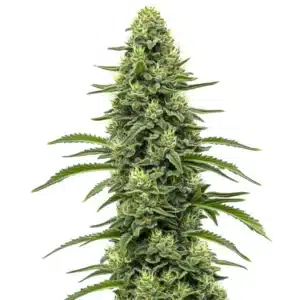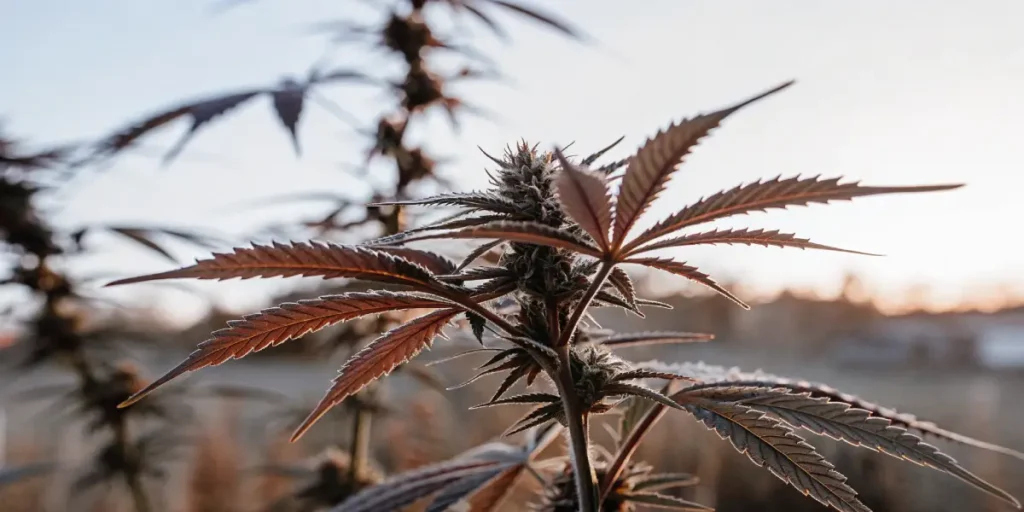
Do Cannabis Laticifers Produce Terpenes or Cannabinoids?
The question “Do cannabis laticifers produce terpenes or cannabinoids?” sparks curiosity among both first-time cannabis seed buyers and seasoned cultivators. Laticifers, known for their role in many plant species, are specialized cells or ducts that produce latex. While latex production is well-known in plants like rubber trees, in cannabis, the focus is on terpenes and cannabinoids.
Cannabis laticifers might not be as widely discussed as trichomes, but they play an intriguing part in the plant’s biology. Trichomes are the tiny, hair-like structures you see on cannabis flowers, known for producing the majority of the plant’s terpenes and cannabinoids. Laticifers, though not as visible, are suspected to have a role in supporting these processes.
Recommended Strains
Sour Diesel
-
THC: 22% - 25%
-
Type of seed: Feminized
-
Phenotype: 70% Sativa / 30% Indica
-
Flavor: Citrus, Diesel, Earthy
-
Day to flower: 8 - 10 weeks
OG Kush
-
THC: 20% - 24%
-
Type of seed: Feminized
-
Phenotype: 45% Sativa / 55% Indica
-
Flavor: Citrus, Lemon
-
Day to flower: 8 - 10 weeks
When growing strains like Blackberry Kush Auto, knowing the potential role of laticifers can be valuable. These strains are rich in unique flavors and effects, which are largely due to terpenes and cannabinoids. A deep dive into the plant’s anatomy can provide insights into how these compounds are produced and stored.
Cannabis Laticifers and Terpene Production
Terpenes are the aromatic compounds responsible for the distinct scents of cannabis. They contribute to the plant’s flavor and therapeutic properties. When asking, “Do cannabis laticifers produce terpenes or cannabinoids?”, it’s important to consider how terpenes are typically synthesized in the plant.
In cannabis, terpene biosynthesis primarily occurs in the trichomes. However, the role of laticifers in cannabis terpene production is not completely understood. Some researchers suggest that laticifers may assist in the storage or transport of these compounds within the plant.
The role of laticifers in cannabis terpene production might be subtle yet pivotal, potentially affecting how terpenes are distributed throughout the plant. By knowing these dynamics, cultivators can better grasp how different cannabis strains develop their unique aromatic profiles. This knowledge can be particularly beneficial in the commercial cultivation of cannabis, where maximizing terpene yield is often a priority.
Further research into cannabis laticifers and terpene production could shed light on more precise cultivation techniques. By identifying the conditions that optimize laticifer activity, growers might enhance the overall terpene profile of their crops. This could lead to more effective strategies in producing cannabis with desired aromatic and therapeutic qualities.
Practical Insights into Terpene Production
For growers cultivating strains like Sour Diesel, maximizing terpene levels is crucial for achieving the desired aroma and effects. Knowing the potential contribution of laticifers could enhance cultivation techniques. For example, optimizing growing conditions such as light and nutrients can indirectly influence laticifer activity.
Real-life scenarios show that growers who focus on environmental factors often notice increased terpene profiles in their crops. This suggests a possible, though indirect, link between laticifers and terpene production. Exploring this relationship further could lead to innovative growing strategies.
Integrating the study of terpene biosynthesis in cannabis laticifers into cultivation practices could unveil new ways to improve plant quality. By focusing on how laticifers function under various conditions, growers may find unique methods to boost terpene levels. This approach requires a keen knowing of plant physiology and a willingness to experiment with different techniques.
The exploration of laticifers and their potential role in enhancing terpene profiles also opens up avenues for research into sustainable cultivation methods. By harnessing the natural processes within the plant, growers could reduce reliance on external additives, leading to more eco-friendly cultivation practices. This holistic view of plant anatomy might be the key to future advancements in cannabis agriculture.
Promos & Deals
Cannabinoids Synthesis in Cannabis Laticifers
Cannabinoids are the chemical compounds found in cannabis that interact with our body’s endocannabinoid system, producing various effects. The synthesis of these compounds is primarily linked to the glandular trichomes. But what about the role of cannabis laticifers and cannabinoid production?
Though trichomes are the main sites for cannabinoid synthesis, laticifers might play a supportive role. The hypothesis is that laticifers could be involved in transporting or storing these compounds, contributing to the overall cannabinoid profile of the plant.
Knowing cannabinoids synthesis in cannabis laticifers requires further scientific inquiry. While current knowledge highlights trichomes as the primary production sites, the potential auxiliary functions of laticifers in cannabinoid transport or storage could be significant. This insight encourages a deeper examination of cannabis plant anatomy and its implications for cultivation.
The exploration of cannabis laticifers and cannabinoid production could revolutionize breeding strategies. By recognizing laticifers’ possible roles, breeders might develop strains with enhanced cannabinoid profiles, providing more potent effects and medicinal benefits. This could lead to innovations in the development of cannabis products tailored to specific therapeutic needs.
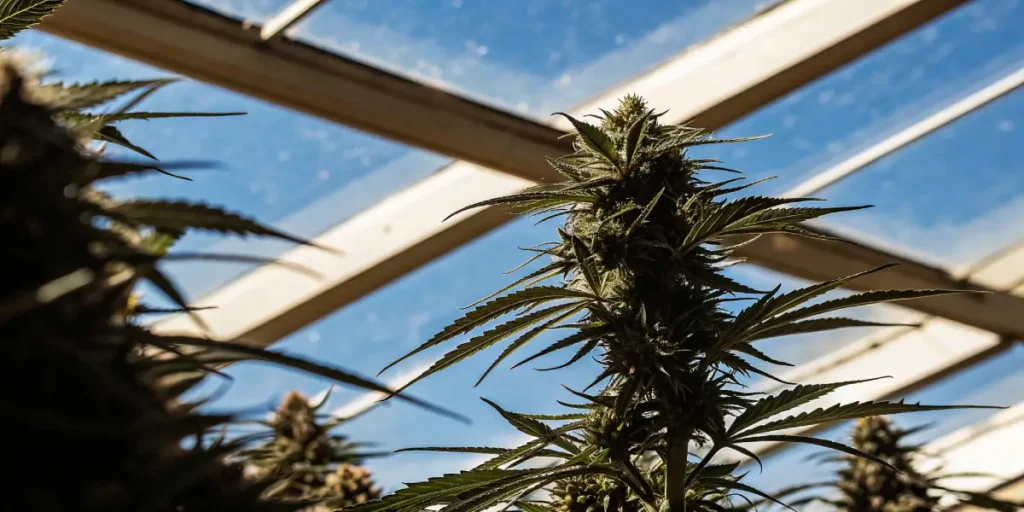
Exploring Cannabinoid Synthesis Further
For those cultivating strains like OG Kush, knowing cannabinoid synthesis is key. Experienced growers know that factors like genetics, light, and nutrients affect cannabinoid levels. While laticifers are not the primary producers, their potential role in cannabinoid synthesis in cannabis laticifers should not be overlooked.
Practical examples from growers indicate that healthier plants with robust laticifer systems may exhibit better cannabinoid profiles. This suggests that maintaining optimal plant health could indirectly support cannabinoid production by enhancing laticifer function.
Investigating the intricate processes of cannabinoids synthesis in cannabis laticifers can offer growers an edge in optimizing their cultivation techniques. By focusing on the health and vigor of laticifers, cultivators might improve the overall quality of their harvest. This approach demands an integrated knowing of plant health and environmental factors that influence laticifer functionality.
As the cannabis industry continues to evolve, the contribution of laticifers to cannabinoid synthesis could become a focal point for research and development. Knowing these dynamics not only expands the scientific knowledge of cannabis but also provides practical applications for enhancing crop yields and quality. This could pave the way for new standards in cannabis cultivation and product development.
Frequently Asked Questions
Do cannabis laticifers have a direct role in terpene production?
Cannabis laticifers are not directly responsible for terpene production, which mainly occurs in the trichomes. However, they might play a supportive role in the storage or transport of terpenes within the plant. This indirect involvement can still be significant, especially when considering strategies to enhance terpene profiles.
Growers can focus on optimizing environmental conditions to support the overall health of the plant, including its laticifers. This can lead to improved terpene outcomes, even if the exact mechanisms are not fully understood.
Research into the role of laticifers in cannabis terpene production continues to evolve, offering fascinating insights into plant physiology. By exploring how these structures might assist in the distribution of terpenes, cultivators could refine their methods for boosting aroma and flavor in their crops. This knowing encourages innovation and precision in cannabis agriculture.
As our knowledge of the interplay between trichomes and laticifers grows, so too does the potential for advanced cultivation techniques. By leveraging the supportive functions of laticifers, growers can enhance the aromatic qualities of their cannabis, providing consumers with richer and more satisfying experiences. This represents a promising frontier in the science of cannabis production.
What is the primary function of laticifers in cannabis?
The primary function of laticifers in cannabis is not as clearly defined as in other plants, such as those producing latex. In cannabis, they might assist in the transport or storage of secondary metabolites, including terpenes and cannabinoids. Their exact role remains a subject of ongoing research.
Knowing the potential functions of laticifers can offer new perspectives for growers looking to enhance their crop’s chemical profiles. Exploring this aspect of plant biology could lead to innovative cultivation techniques.
The exploration of cannabis laticifers and cannabinoid production reveals potential roles in plant metabolism that extend beyond traditional assumptions. By investigating these structures, scientists and growers can develop a more comprehensive knowing of cannabis biology and its practical applications. This knowledge is vital for refining cultivation practices and achieving optimal plant performance.
Future research into laticifers could uncover additional functions that contribute to the overall health and productivity of cannabis plants. By integrating these insights into cultivation strategies, growers can optimize their operations, leading to higher-quality yields and more efficient resource use. This ongoing study of plant anatomy promises to enhance the future of cannabis cultivation.
How can I maximize terpene production in my cannabis plants?
Maximizing terpene production involves optimizing several factors, including light, nutrients, and overall plant health. Ensuring that your plants have a balanced environment can support the production of terpenes in the trichomes and potentially involve laticifers in their transport or storage.
Strains like Sour Diesel, known for their strong terpene profiles, benefit from careful cultivation practices. Experimenting with different growing techniques can help you find the best approach for enhancing terpene production in your specific conditions.
Achieving high terpene levels requires a nuanced knowing of terpene biosynthesis in cannabis laticifers and their interactions with environmental factors. By tailoring light exposure, nutrient regimes, and temperature conditions, growers can create an environment that supports optimal terpene production. This approach demands careful monitoring and a willingness to adapt techniques based on plant responses.
Continued exploration of the relationship between laticifers and terpene production could reveal new opportunities for enhancing flavor and aroma in cannabis crops. By embracing innovative strategies and staying informed about the latest research, cultivators can stay ahead of industry trends and meet consumer demands for high-quality cannabis products.
Are there specific strains known for high cannabinoid production?
Strains like OG Kush are renowned for their high cannabinoid content. These strains have been bred for their potent effects and rich chemical profiles. Knowing the potential contribution of laticifers can add another dimension to how these strains develop their cannabinoid content.
For growers, selecting the right strain is a critical first step. Combined with optimal growing conditions, this can lead to a successful harvest with high cannabinoid levels. Experimenting with different strains and techniques is key to finding the perfect balance.
Exploring the genetic factors that influence cannabinoid synthesis in cannabis laticifers can lead to the development of new strains with enhanced chemical profiles. By selecting for traits that optimize laticifer function and cannabinoid production, breeders can create plants with unique therapeutic potentials. This approach requires a deep knowing of plant genetics and molecular biology.
The identification of strains best suited for high cannabinoid production could also inform cultivation practices that maximize these traits. By integrating knowledge of laticifers and their roles into breeding programs, growers can produce cannabis that meets specific market demands, offering consumers diverse and potent options.
What are the benefits of knowing cannabis plant anatomy?
Knowing cannabis plant anatomy, including structures like laticifers and trichomes, can help growers optimize their cultivation practices. This knowledge allows for more targeted strategies to enhance the production of desirable compounds like terpenes and cannabinoids.
By gaining insights into how different parts of the plant work together, growers can make informed decisions that improve the quality and yield of their crops. This is particularly valuable for those looking to maximize the unique characteristics of specific strains.
Delving into the anatomy of cannabis plants, such as the interplay between trichomes and laticifers, provides growers with a comprehensive framework for improving plant management. By knowing these relationships, cultivators can enhance both the potency and flavor profiles of their cannabis, leading to higher consumer satisfaction and increased market value.
Moreover, a thorough grasp of cannabis plant anatomy can lead to the development of more sustainable cultivation practices. By leveraging natural plant mechanisms, such as the roles of laticifers, growers can minimize the use of synthetic additives, reducing environmental impact and promoting ecological balance in their operations.

